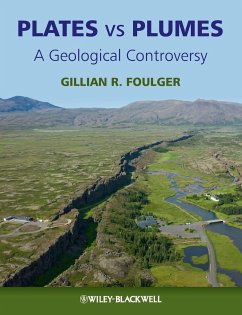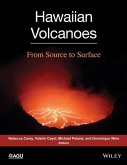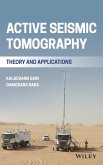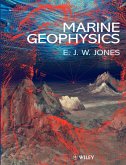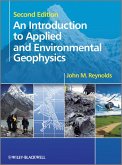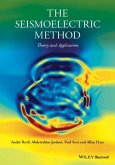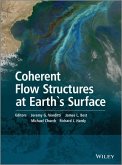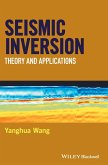Since the advent of the mantle plume hypothesis in 1971, scientists have been faced with the problem that its predictions are not confirmed by observation. For thirty years, the usual reaction has been to adapt the hypothesis in numerous ways. As a result, the multitude of current plume variants now amounts to an unfalsifiable hypothesis.
In the early 21st century demand became relentless for a theory that can explain melting anomalies in a way that fits the observations naturally and is forward-predictive. From this the Plate hypothesis emerged-the exact inverse of the Plume hypothesis. The Plate hypothesis attributes melting anomalies to shallow effects directly related to plate tectonics. It rejects the hypothesis that surface volcanism is driven by convection in the deep mantle.
Earth Science is currently in the midst of the kind of paradigm-challenging debate that occurs only rarely in any field. This volume comprises its first handbook. It reviews the Plate and Plume hypotheses, including a clear statement of the former. Thereafter it follows an observational approach, drawing widely from many volcanic regions in chapters on vertical motions of Earth s crust, magma volumes, time-progressions of volcanism, seismic imaging, mantle temperature and geochemistry.
This text:
Deals with a paradigm shift in Earth Science - some say the most important since plate tectonics
Is analogous to Wegener s The Origin of Continents and Oceans
Is written to be accessible to scientists and students from all specialities
This book is indispensable to Earth scientists from all specialties who are interested in this new subject. It is suitable as a reference work for those teaching relevant classes, and an ideal text for advanced undergraduates and graduate students studying plate tectonics and related topics.
Visit Gillian s own website at http://www.mantleplumes.org
Hinweis: Dieser Artikel kann nur an eine deutsche Lieferadresse ausgeliefert werden.
In the early 21st century demand became relentless for a theory that can explain melting anomalies in a way that fits the observations naturally and is forward-predictive. From this the Plate hypothesis emerged-the exact inverse of the Plume hypothesis. The Plate hypothesis attributes melting anomalies to shallow effects directly related to plate tectonics. It rejects the hypothesis that surface volcanism is driven by convection in the deep mantle.
Earth Science is currently in the midst of the kind of paradigm-challenging debate that occurs only rarely in any field. This volume comprises its first handbook. It reviews the Plate and Plume hypotheses, including a clear statement of the former. Thereafter it follows an observational approach, drawing widely from many volcanic regions in chapters on vertical motions of Earth s crust, magma volumes, time-progressions of volcanism, seismic imaging, mantle temperature and geochemistry.
This text:
Deals with a paradigm shift in Earth Science - some say the most important since plate tectonics
Is analogous to Wegener s The Origin of Continents and Oceans
Is written to be accessible to scientists and students from all specialities
This book is indispensable to Earth scientists from all specialties who are interested in this new subject. It is suitable as a reference work for those teaching relevant classes, and an ideal text for advanced undergraduates and graduate students studying plate tectonics and related topics.
Visit Gillian s own website at http://www.mantleplumes.org
Hinweis: Dieser Artikel kann nur an eine deutsche Lieferadresse ausgeliefert werden.
"This new textbook is ideal for a graduate-level seminar on the ongoing controversy over plumes." -- Andrew Alden - Andrew's Geology Blog, 18 November 2010
"This text is well written and easy to digest for the educated reader. . . it probably best suits advanced undergraduates and postgraduate students and would make a good text for courses in petrology, geophysics or basin analysis." -- The Observatory - Newsletter of the Royal Astronomical Society, 29 November 2010
"This text is well written and easy to digest for the educated reader. . . it probably best suits advanced undergraduates and postgraduate students and would make a good text for courses in petrology, geophysics or basin analysis." -- The Observatory - Newsletter of the Royal Astronomical Society, 29 November 2010
"Nevertheless I strongly recommend this book both for students and researchers. It is ideal for use in classroom discussion projects, or in "lunch time discussion" meetings. It is clearly written and well illustrated and includes hundreds of useful references as recent as 2010." (Bull Volcanol, 3 April 2012)
"As such, it is a valuable work for advanced undergraduate and graduate students, but also for researchers from many specialties in geology, geophysics, geochemistry and geography." (Pure and Applied Geophysics, 1 April 2013)
"It is highly recommended to all OUGS members, who could consider reading the first and last chapters, together with one or two of the main chapters, as a minimum." (Open University Geological Society Journal, 1 November 2011) "In general, I found the book crisply and clearly written, easy to read, and liberally illustrated. It is also a wonderful summary of a wide range of volcanic provinces in time and space, as well as a provocative review of what we think we know and don't know of Planet Earth and deep mantle dynamics. It will be an invaluable resource for teachers of Earth science, ranging from geomorphologists to volcanologists." (Geobulletin, 1 March 2011)
"This is knee-deep geophysics, but too fascinating to put down. As the title says, there are conflicting views of how and why the earth recycles itself...very strong views. . . It goes to great lengths to explain the theories of continental drift through plate tectonics that took half a century to be accepted by mainstream geology." (Janet Tanaka, 2011)
"This new textbook is ideal for a graduate-level seminar on the ongoing controversy over plumes." (About.com, 2011)
"I have much pleasure in recommending this book, a distillation of global geodynamics information and ideas by a true leader in the field, for the libraries of institutions and individuals." (Current Science, 1 January 2011)
"At the end I may say that this is must read book for igneous petrologists and students." (Journal of the Geological Society of India, 1 March 2011)
"One cannot help being impressed by the breadth of material presented in this book . . . in concluding this review I have to admit to being impressed by the book even though my own work comes in for a fair amount of bashing in it. I was struck by the parallels between the plume controversy and the granite controversy, which in various ways dominated igneous petrology in the first half of the twentieth century." (Mantleplumes, 2011)
"This text is well written and easy to digest for the educated reader. Bullet points make it easy to skim read and pick the sections that interest you. It probably best suits advanced undergraduates and postgraduate students and would make a good text for courses in petrology, geophysics, or basin analysis." (The Observatory, 1 April 2011) "This new textbook is ideal for a graduate-level seminar on the ongoing controversy over plumes."
(Andrew Alden - Andrew's Geology Blog, 18 November 2010)
"This text is well written and easy to digest for the educated reader. . . it probably best suits advanced undergraduates and postgraduate students and would make a good text for courses in petrology, geophysics or basin analysis." (The Observatory - Newsletter of the Royal Astronomical Society, 29 November 2010)
"As such, it is a valuable work for advanced undergraduate and graduate students, but also for researchers from many specialties in geology, geophysics, geochemistry and geography." (Pure and Applied Geophysics, 1 April 2013)
"It is highly recommended to all OUGS members, who could consider reading the first and last chapters, together with one or two of the main chapters, as a minimum." (Open University Geological Society Journal, 1 November 2011) "In general, I found the book crisply and clearly written, easy to read, and liberally illustrated. It is also a wonderful summary of a wide range of volcanic provinces in time and space, as well as a provocative review of what we think we know and don't know of Planet Earth and deep mantle dynamics. It will be an invaluable resource for teachers of Earth science, ranging from geomorphologists to volcanologists." (Geobulletin, 1 March 2011)
"This is knee-deep geophysics, but too fascinating to put down. As the title says, there are conflicting views of how and why the earth recycles itself...very strong views. . . It goes to great lengths to explain the theories of continental drift through plate tectonics that took half a century to be accepted by mainstream geology." (Janet Tanaka, 2011)
"This new textbook is ideal for a graduate-level seminar on the ongoing controversy over plumes." (About.com, 2011)
"I have much pleasure in recommending this book, a distillation of global geodynamics information and ideas by a true leader in the field, for the libraries of institutions and individuals." (Current Science, 1 January 2011)
"At the end I may say that this is must read book for igneous petrologists and students." (Journal of the Geological Society of India, 1 March 2011)
"One cannot help being impressed by the breadth of material presented in this book . . . in concluding this review I have to admit to being impressed by the book even though my own work comes in for a fair amount of bashing in it. I was struck by the parallels between the plume controversy and the granite controversy, which in various ways dominated igneous petrology in the first half of the twentieth century." (Mantleplumes, 2011)
"This text is well written and easy to digest for the educated reader. Bullet points make it easy to skim read and pick the sections that interest you. It probably best suits advanced undergraduates and postgraduate students and would make a good text for courses in petrology, geophysics, or basin analysis." (The Observatory, 1 April 2011) "This new textbook is ideal for a graduate-level seminar on the ongoing controversy over plumes."
(Andrew Alden - Andrew's Geology Blog, 18 November 2010)
"This text is well written and easy to digest for the educated reader. . . it probably best suits advanced undergraduates and postgraduate students and would make a good text for courses in petrology, geophysics or basin analysis." (The Observatory - Newsletter of the Royal Astronomical Society, 29 November 2010)

